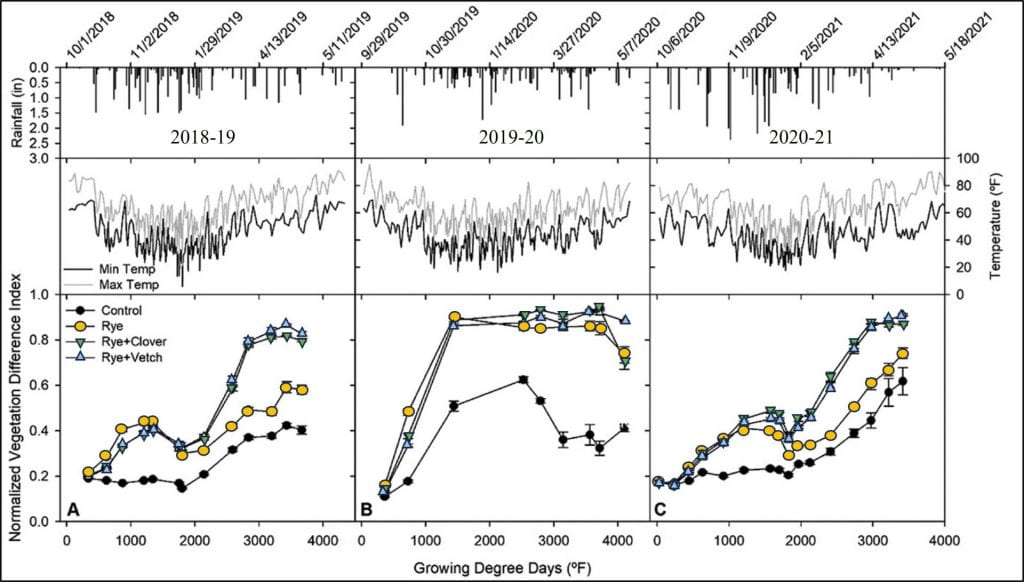Cover crops respond to planting conditions and temperatures like other crops, and their growth will certainly follow winter temperatures as they accumulate growing degree days (GDD). Rather than set a solid burn down date based on a month or corn/soybean planting dates, you should scout fields to check on the current stage and biomass present. If your goal is to reduce interference with cash crop planting, then warmer winters and excessive growth may occur earlier in the spring than usual. If your goal is to build biomass for nitrogen, weed suppression, or a moisture retaining mulch layer, your potential burn down date can still vary from year to year. Additionally, our wet spring has caused variable conditions our fields, with saturated conditions killing off some cover crop growth (Figure 1).

Using a drone to map cover crop growth over three seasons (2018-2021), we observed variability with minor differences in winter temperatures (Figure 2). We measured cover crop biomass using normalized difference vegetation index (NDVI), which can estimate how “green” the ground is due to plant growth. For the first and third seasons, NDVI reaches a maximum around 3000 cover crop GDD (base temp = 0°F). At this point NDVI can’t go much higher because the ground is fully covered by cover crop leaves (Figure 3). You will also see that rye (yellow circles), which elongates upward rather than across the ground (Figure 2), doesn’t reach as high NDVI.

This is different in the second season though (2019-20), where slightly warmer temperatures during the early winter months provided the potential for maximum growth early. Much of our biomass that year was higher than normal, like planting cover crops in August or September. This same effect in 2020 put our small grains ahead of schedule, where nitrogen applications needed earlier applications. With the future potential for warmer and wetter winter months, we should consider that cover crop growth may not match experience and begin checking fields earlier in the season to determine burn down dates.

